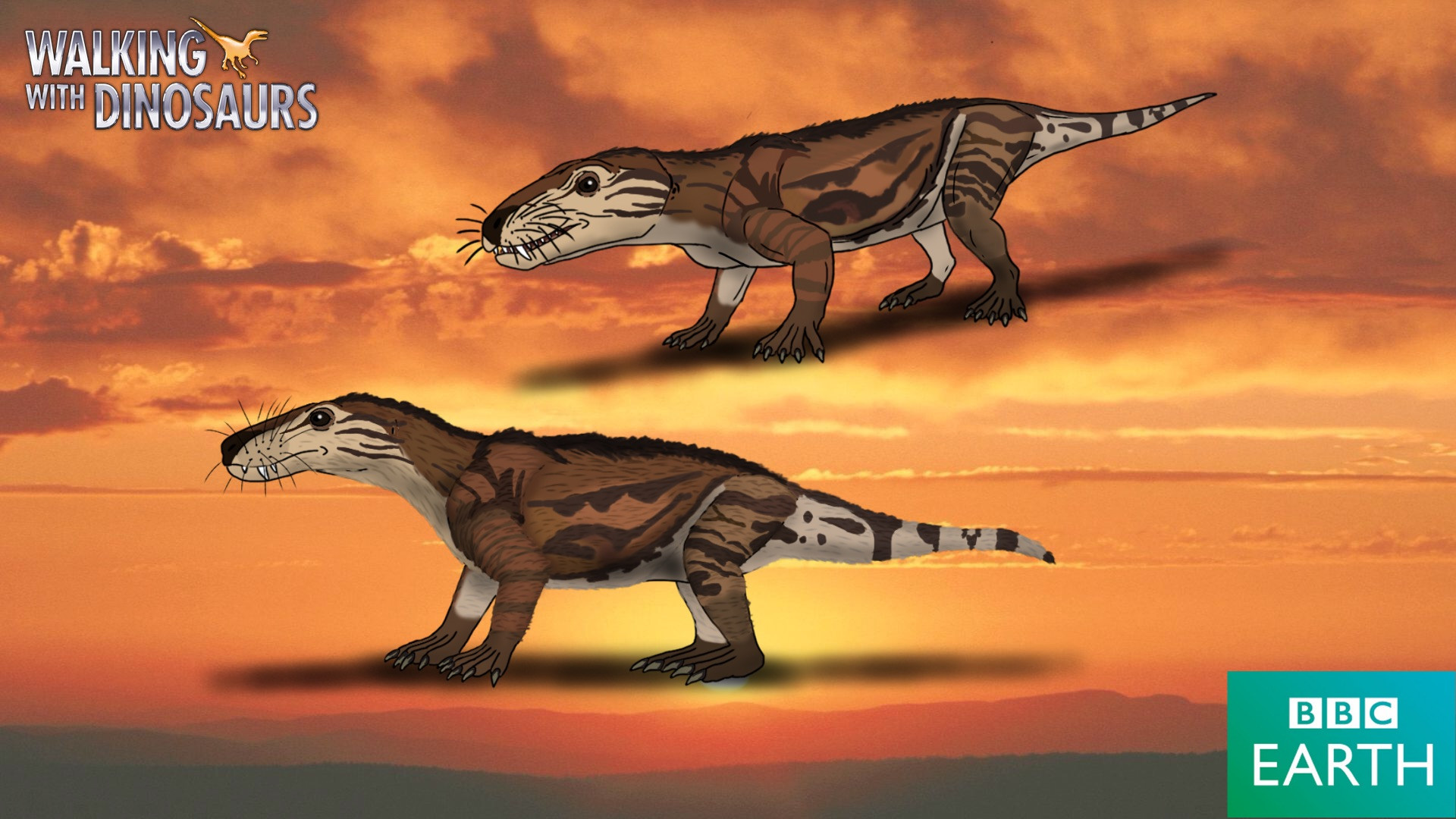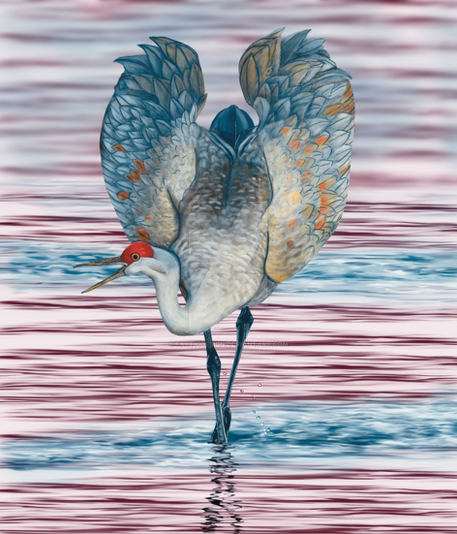HOME | DD
 TrefRex — Walking with Dinosaurs: Cynodont
TrefRex — Walking with Dinosaurs: Cynodont

Published: 2015-08-24 01:56:10 +0000 UTC; Views: 22431; Favourites: 247; Downloads: 0
Redirect to original
Description
Diet: Carnivore (Prey included insects and other small animals, although the crushing molars could've coped with seeds and roots)Type: Synapsid theriodontid therapsid/protomammal
Size: 5 feet (1.5 meters) long and 20 kilograms, judging from the size of its teeth
Region: North America (Arizona)
Age: Late Triassic (225 to 215 million BC; Norian)
Enemies: Early dinosaurs such as Chindesaurus; Postosuchus (the remains of what's thought to be a cynodont were found in its stomach content) and other large predators.
Episode: New Blood
Info: Appearing about 260 million years ago in the Late Permian period, survived the devastating Permian-Triassic Mass Extinction Event through burrowing, and thrived in the Triassic period before disappearing in the Mid Jurassic period, cynodonts were a group of theriodontid therapsids ('protomammals' or 'mammal-like reptiles') that were the ancestors of mammals (including us), sharing a lot more mammalian traits than reptilian (such as having fur, whiskers, a warm-blooded metabolism, a large braincase, and having a bony palate in the roof of their mouths which would separate the air passages to allow breathing at the same time as eating), and coming into various types (Some families of cynodonts were carnivorous, while others were omnivorous and even herbivorous with inscisor teeth). This unnamed species of cynodont that appeared in the original series is known from two large molar teeth found in the Petrified Forest National Park in Arizona and judging from the size of the teeth, the animal would've been up to around 5 feet (1.5 meters) long, the size of a domestic dog.
Note: Originally it was going to be Thrinaxodon, but after hearing from the original series, the book Walking with Dinosaurs: A Natural History, and the website of the series that its an unnamed cynodont known from teeth from the Chinle Formation and that the creators based its appearance on Thrinaxodon, I decided to change it to an unnamed cynodont from the Chinle Formation for that reason, as well as the fact that Thrinaxodon lived in South Africa and Antarctica during the Early Triassic, millions of years before the setting of the first episode of the original series. So I decided to come up of what the actual Chinle Formation cynodont would've looked like since it would've been different from Thrinaxodon and after having a hard time finding various types of carnivorous cynodonts, I decided to create a cynodont with the head based on Thrinaxodon and a body based on Cynognathus, a 3.3-foot (1-meter) cynodont from Early Triassic South Africa, South America, China, and Antarctica, due to the fact that judging from its teeth size, it would've been larger, up to 5 feet (1.5 meters).
Requested by ninjakingofhearts
Walking with Dinosaurs is owned by BBC
Related content
Comments: 31

👍: 1 ⏩: 0

👍: 0 ⏩: 0

👍: 1 ⏩: 1

👍: 0 ⏩: 0

There was Redondagnathus hunti which lived in North America during the late Triassic
👍: 0 ⏩: 0

That's already in use: en.wikipedia.org/wiki/Cynodon_…
Here's my personal name for this species: "Fossilicyon lapidesilvensis", the "burrowing dog of the Petrified Forest".
👍: 0 ⏩: 1

This creature is called Kraterokheirodon.
👍: 0 ⏩: 0

loved the little theme song these little things had
👍: 0 ⏩: 0

In hindsight, aside from the epidermis they weren't 'that' far off
👍: 1 ⏩: 0

2010's .... Add fur & feather to everything
Which is nice; considering mammalians are synapsids
👍: 0 ⏩: 0

Yep!
No wonder mammals including us evolved from them!
👍: 0 ⏩: 1

This Cynodont may have been the little-known Kraterokheirodon
👍: 0 ⏩: 1

Really, wow! I just looked it up!
👍: 0 ⏩: 1

That guy might not even BE a cynodont.
But I honestly don't care.
👍: 0 ⏩: 1

Thanks!
Sorry for the long wait!
👍: 0 ⏩: 1

No problem but who's next?
👍: 0 ⏩: 1

the metoposaur from the book, Walking with Dinosaurs: A Natural History
👍: 0 ⏩: 0


































